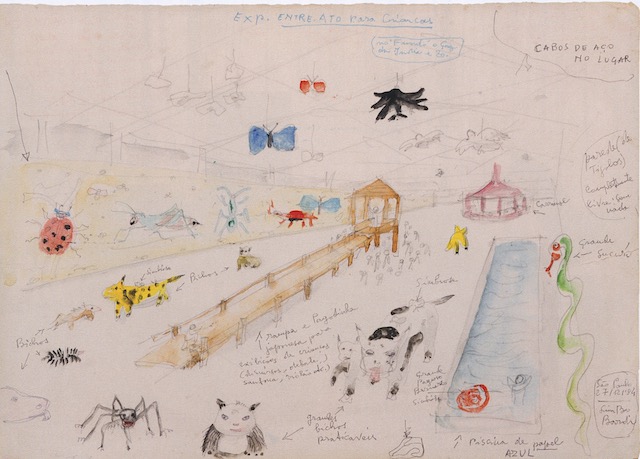Lina Bo Bardi (1914-1992) architect, Italy, Brazil
Bo Bardi receives her training as an architect in Rome, after the diploma she moves to Milano where she works as an editor and graphic designer for magazines. In 1945, she travels to Brazil with Pietro Maria Bardi who becomes her husband. In 1947, they collaborate with arts patron Assis Chateaubriand to open MASP (Museu de Arte de Sao Paulo). The Bardi’s curatorial and pedagogical concept of the Museum is a novelty in Brazil.
In 1949-52 she designs their own residence, „the Glass House“, her first project that materialized. In 1957, she experiences F.L. Wight’s architecture while traveling to New York. She takes many pictures and collects material to be used later in her application for a permanent professor position (see: Propaedeutic Contribution).
In the 1960’s Bardi signs an agreement to transfer MASP to a new location at Avenida Paulista. In this time Bo Bardi is active as a curator.
In 1957, she starts the project for the new MASP, but construction starts not until late 1960, the Museum opens in in 1968. It was one of the first large public buildings in raw reinforced concrete. Without consulting her, landscape architect Roberto Burle Marx was contacted to design the plaza of the Museum.
Instead, Bo Bardi envisioned in a colorful drawing, the public area of the Terrace at MASP as a place for large sculptures and a playground: „I tried to create an atmosphere on Triano Terrace, I’d like for the common people to go there and see outdoor exhibitions and chat, listen to music, watch films.“ She expected to see „children playing in the morning and afternoon sun..“ (Zeuler R.M. de A. Lima: Lina Bo Bardi, Yale University Press, 2013, p. 131)
In 1977-1986, she designs the second seminal public building in Brazil, the SESC Pompeia Leisure Center.
Biography:
Cathrine Veikos, Lina Bo Bardi. The Theory of Architectural Practice, Routledge: New York, 2014
Lina Bo Bardi: Propaedeutic Contribution to the Teaching of Architectures Theory, Sao Paolo, September 1957 (Translated and edited by Cathrine Veikos, in: Lina Bo Bardi, 2014)
Zeuler R.M. de A. Lima, Lina Bo Bardi, New Haven : Yale University Press, 2013
Martin Filler: An Architecture of Perfect Imperfection, in The New York Review of Books, May 22, 2014
Bardi, Lina Bo et al. Lina Bo Bardi : Tupí or not tupí. Madrid: Fundación Juan March, 2018
Posted September 7, 2016. Up-dated January 15, 2025




